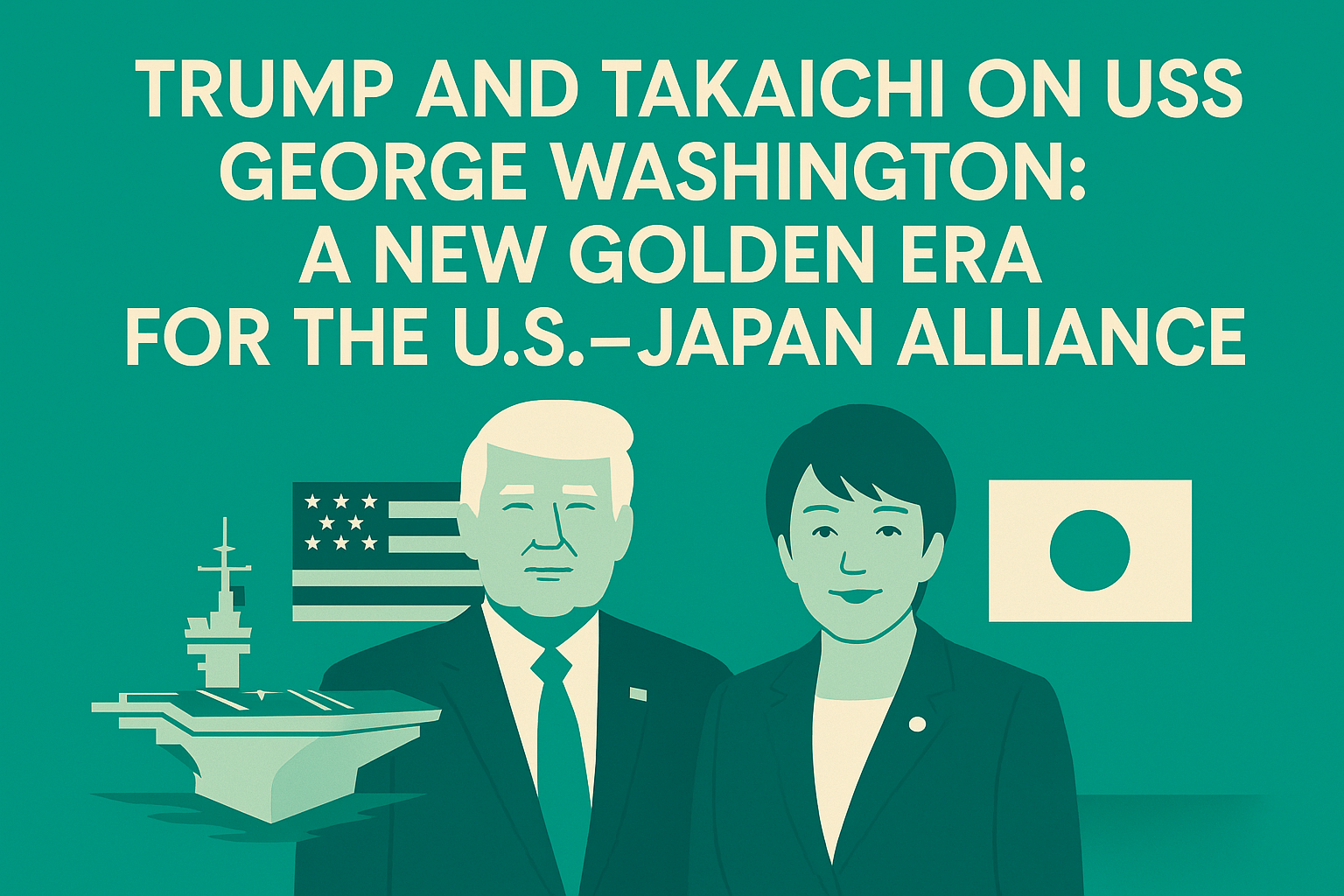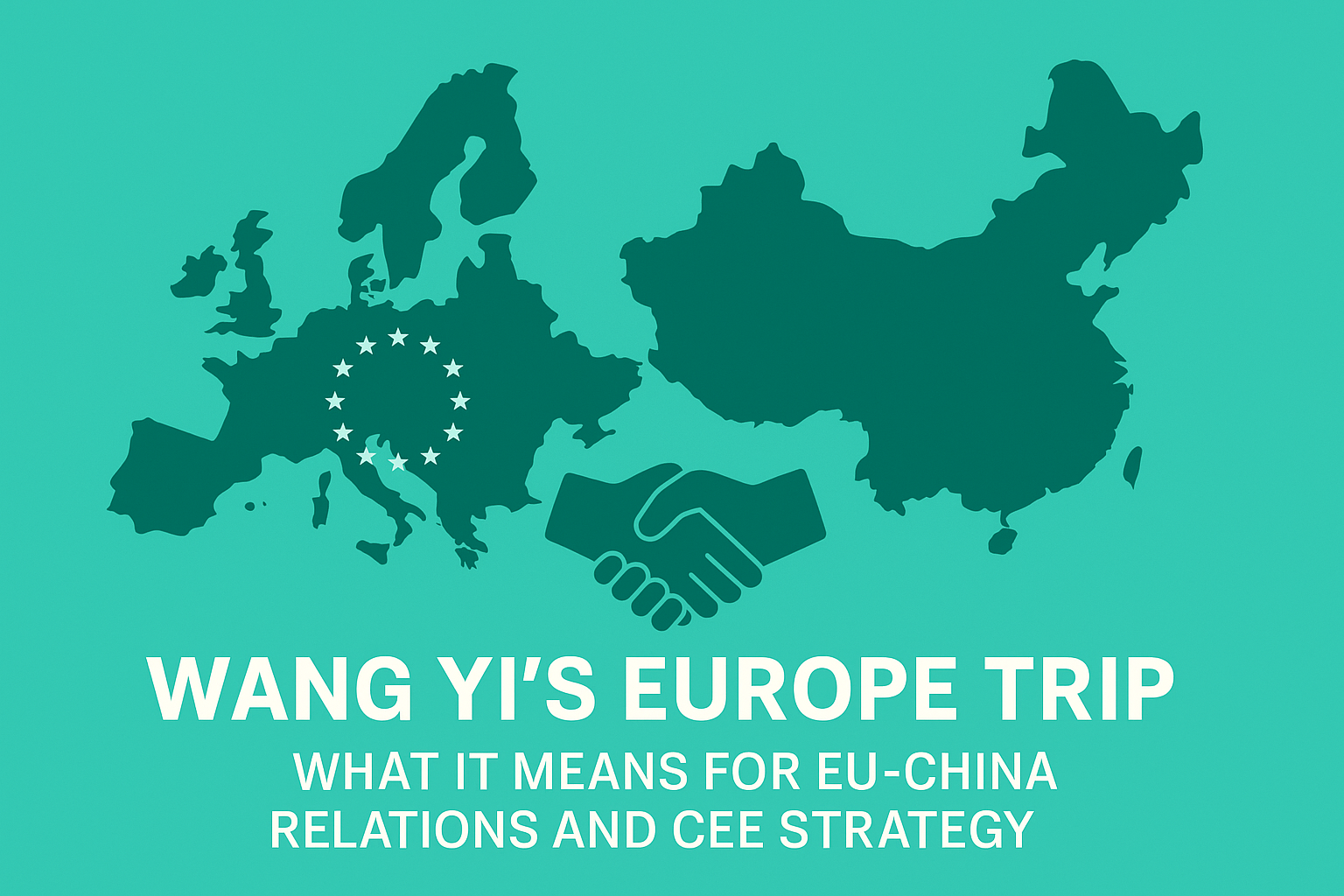Byline:
[John William] — Tokyo/Yokosuka, 28 October 2025
On a brisk autumn afternoon aboard the nuclear-powered aircraft carrier USS George Washington, docked at the U.S. Navy’s Yokosuka naval base in Japan, two potent symbols of power and partnership converged. U.S. President Donald J. Trump and Japanese Prime Minister Sanae Takaichi stood side by side on the carrier’s flight deck, flanked by six-thousand U.S. service personnel and the under-hull might of one of America’s forward-deployed strike assets. The moment was choreographed not simply as a military address, but as a grand diplomatic stage: a deliberate act of messaging, signalling the dawn of a “new golden age” in the U.S.–Japan security and economic alliance.
Trump’s Speech: Power, Precision and Policy
President Trump opened his remarks with a direct invocation of U.S. naval strength:
“There’s no military like our military — not even close. Nobody has our weapons, our missiles, our planes, and our people are the finest in the world.”
He announced that the first batch of missiles for Japan’s F-35 fighter jets had been approved and would arrive “this week… ahead of schedule.”
In framing the U.S.–Japan alliance, he cast Tokyo as a cornerstone partner:
“The cherished alliance between the United States and Japan is one of the most remarkable relationships anywhere in the world.”
Throughout, the language blended trademark “America First” rhetoric with an appeal for enduring alliances:
“From now on, if we’re in a war, we’re going to win — and we’re going to win it like nobody ever before.”
The tone and content of his remarks reveal layered purposes: an expression of military reassurance to U.S. forces and Japanese audiences; a signal to regional competitors (notably China) and a domestic message emphasising U.S. dominance and its robust partnerships. By choosing a forward-deployed carrier base, Trump used visible force and diplomacy in tandem.
Prime Minister Takaichi: A New Leader, a Strategic Turn
For Prime Minister Takaichi, newly appointed and Japan’s first female prime minister, this speech occasion was a deliberate declaration of both continuity and change. She opened with a sober acknowledgement of strategic risk:
“We live in an unprecedentedly severe security environment. Peace cannot be preserved by words alone.”
Standing on the carrier deck, she made the following pledge:
“Japan is ready to contribute even more proactively to peace and stability in the region. We will fundamentally reinforce our defence capabilities and elevate our alliance with the United States to even greater heights.”
Her framing of the U.S.–Japan alliance as entering a “new golden age” invoked both a historic legacy and a strategic leap forward.
Takaichi’s presence carried multiple symbolic weight: a leader from Japan stepping confidently into the global defence-diplomacy arena; a message to Tokyo’s domestic audience that her administration intends to take a more assertive position in regional security; and a demonstration to Washington that Japan is a willing and capable partner.
The Aircraft Carrier as Diplomatic Stage
The choice of the USS George Washington as the venue was anything but incidental. Analysts note that this platform provided multiple layers of meaning:
- A physical backdrop of American maritime power, signaling deterrence and readiness.
- A message of partnership: the U.S. ship in Japanese waters, with Japanese and American leaders addressing U.S. service members, symbolising intertwined security interests.
- A broadcast-ready moment: deck-mounted fighter jets, naval personnel in formation, and an iconic vessel that conveys seriousness, strength and spectacle.
In sum, the stage reinforced the substance: this was not a routine press conference, but a strategic demonstration of alliance, capability and mutual purpose.
Strategic Implications: Beyond the Speeches
Several dimensions rise to the surface when unpacking the wider significance of this event:
1. Defence posture & deterrence
Takaichi’s vow to bolster Japan’s defence capabilities—coupled with Trump’s missile announcement—signals Tokyo’s readiness to step up its security role. This aligns with U.S. efforts to build a network of allies capable of sharing the burden of regional deterrence.
2. Supply-chain & resource security
The pair signed agreements on rare earths and critical minerals, underlining that the U.S.–Japan alliance isn’t merely military, but economic and technological. These resources are central to next-generation defence, energy and industrial systems, and Japan’s participation strengthens alliance resilience.
3. Regional signalling
The visuals and rhetoric send a clear message to China and others: the U.S.–Japan axis is active, confident and ready. The deployment of such a setting indicates strategic tempo—Tokyo and Washington intend to influence the regional architecture, not just respond.
4. Domestic politics
For Japan, Takaichi used this moment to project a firm posture domestically—helping her government define its security identity early in her term. For Trump, the event aids his narrative of strong leadership and global relevance, especially as this trip forms part of his broader Asia tour.
Final Word
On the deck of the USS George Washington, amid the roar of naval power and the glare of international attention, the U.S. President and Japanese Prime Minister delivered more than speeches—they orchestrated a symbolic summit. It encapsulated military strength, diplomatic renewal and strategic realignment. The “new golden age” of the U.S.–Japan alliance is not just rhetoric—it is now being staged, visualised and executed.
For observers of Asia-Pacific geopolitics, the event offers a clear signal: the alliance is entering a phase of heightened visibility and ambition. Whether the policy follow-through matches the spectacle remains to be seen—yet for now, the spectacle itself has made its mark.


